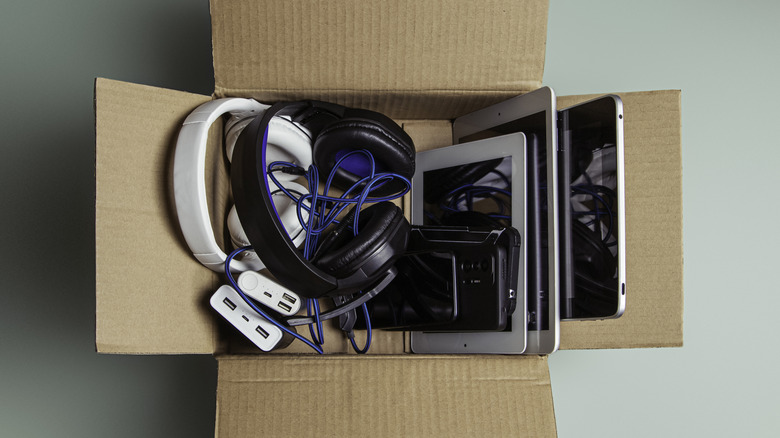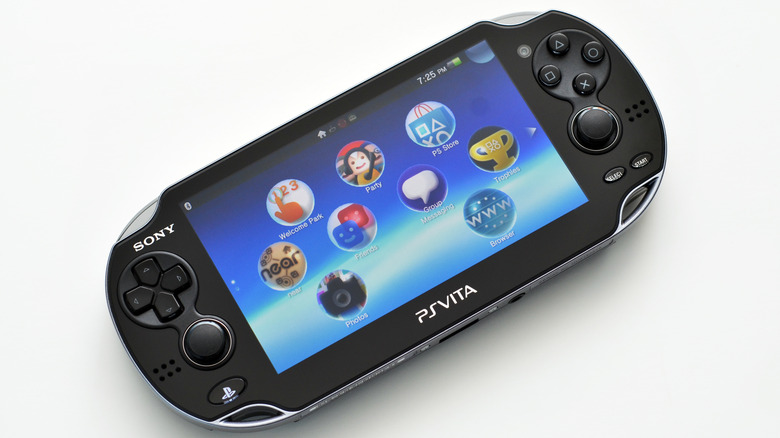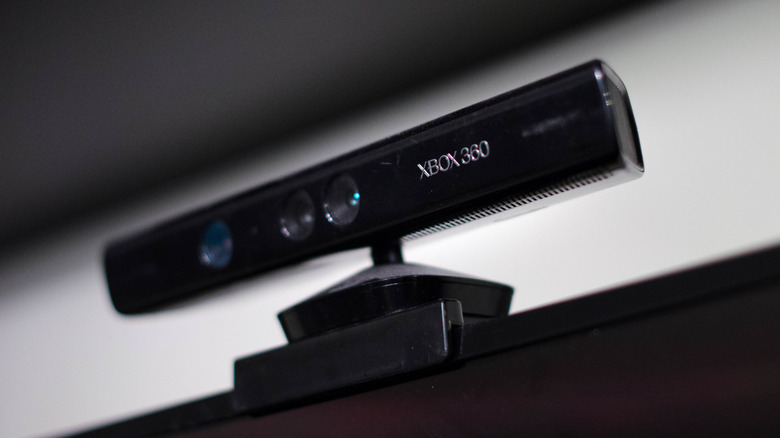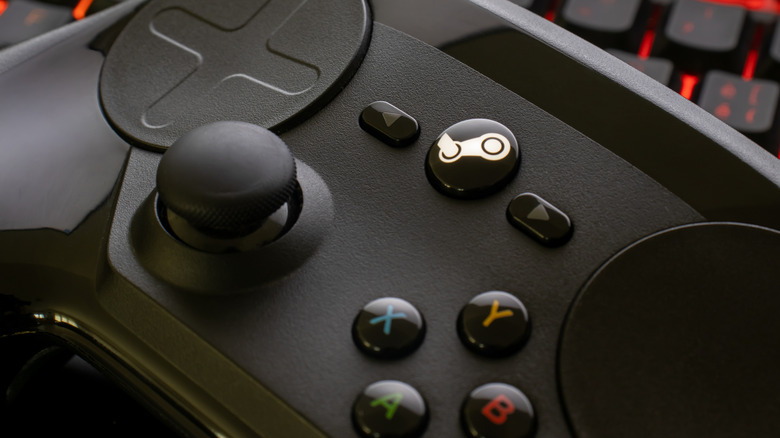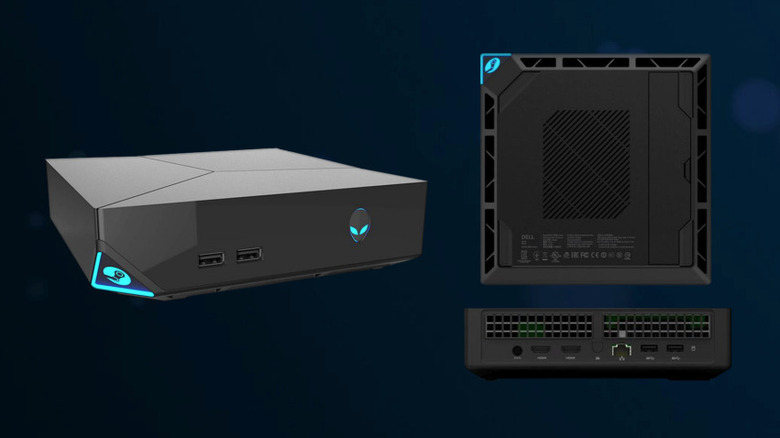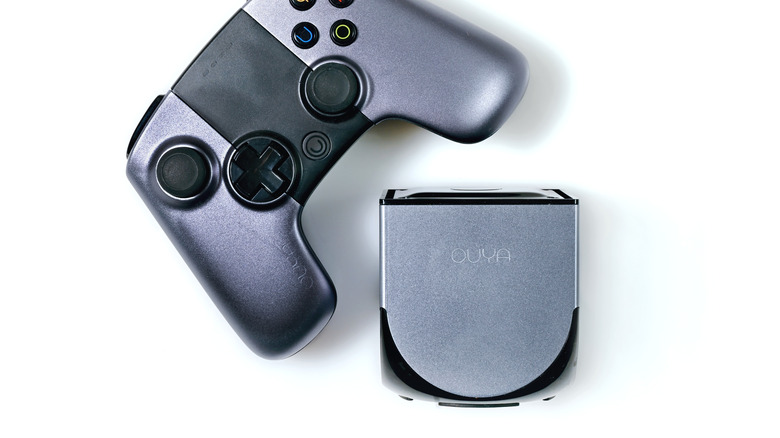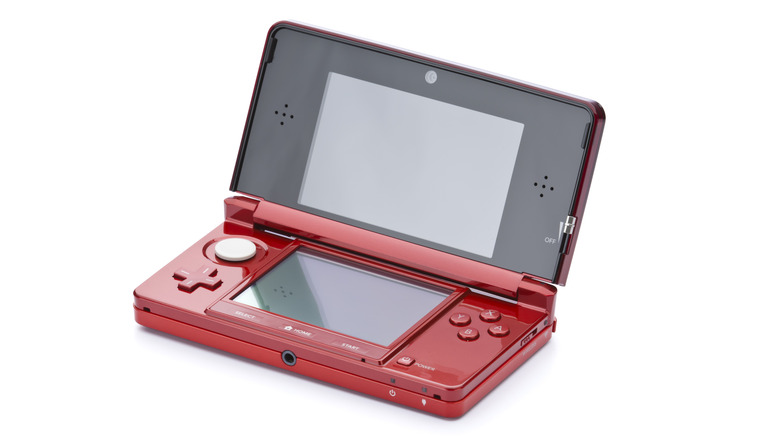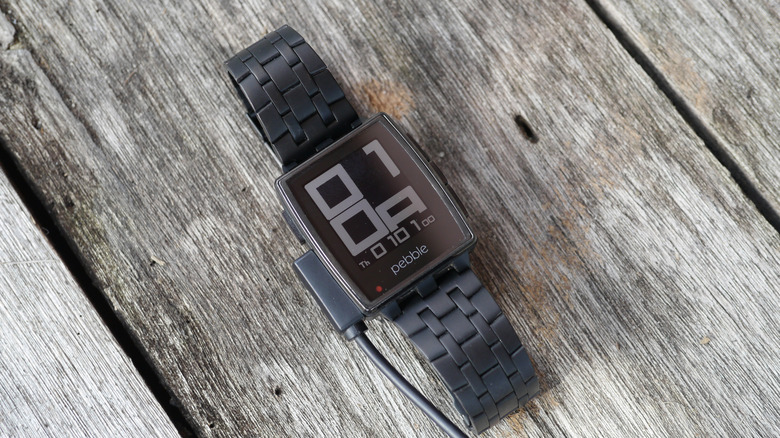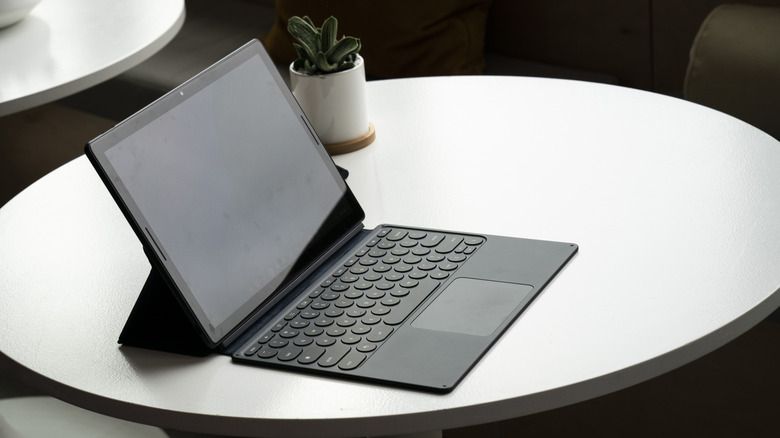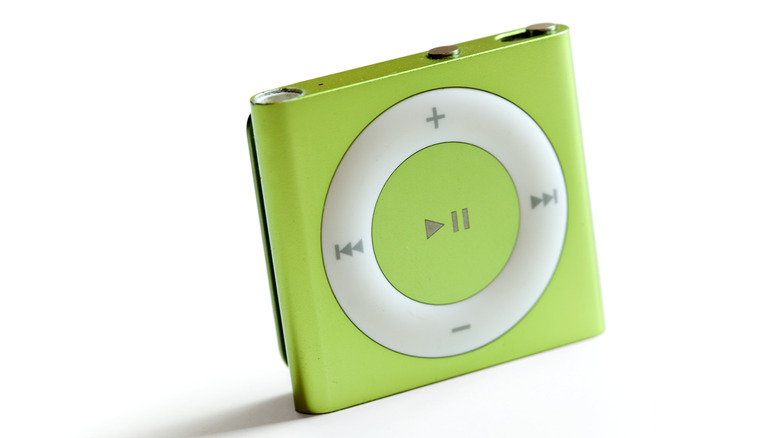10 Iconic Discontinued Gadgets From The 2010s (And Why We Miss Them)
The 2010s was the era of memes, Instagram, streaming services, and everything from "Gangnam Style" to "Game of Thrones." It was also a period of rapid technological advancement in consumer electronics. Smartphones were still relatively new in the public consciousness at the start of the decade, and by the end, they'd been more or less perfected. To get that progress, a lot of companies made risky gambles on technology that didn't live to see the 2020s. Yet revolutionary tech inventions have gone obsolete many times in the past, so "discontinued" doesn't inherently mean "bad." A good chunk of 2010s gadgets are ones we actually miss.
In some cases, it was a good idea at a bad time. One of the rare Apple products you probably didn't know existed was the Apple QuickTake, an affordable point-and-shoot before the market wanted one. Other times, we see products built around one forgettable gimmick that never made much use of it. And in some rare cases, the product did well, but simply fell out of fashion. We're setting the clock back and taking a look at 10 discontinued items that we wish were more than a fond memory.
Amazon Fire Phone
The evolution of the Amazon Kindle, the Fire tablets, and the Alexa speakers proves that the tech giant knows how to make a good product. Except for smartphones. The Amazon Fire Phone was a complete flop, which may be the reason they never tried their hand at the market again. Released in 2014, the marquee feature of the Fire Phone was the use of four selfie cameras to create a convincing screen depth illusion.
Having tried this myself back in the day, it was cool, but only cool for about 30 seconds. One of those things you try once, and then never touch again. The feature was painfully underutilized, too. Aside from the home screen image, the app carousel, some games, and a handful of supported apps, it quickly faded into the background. The Fire Phone had other features like Firefly (basically a Google Lens precursor) but not much else to differentiate itself.
As is the case with many products that swing their weight behind a gimmick, it wasn't enough to sell the phone. The price was high ($649), the specs were middling, it required AT&T for a contract deal, and to make matters worse, it ran on Amazon's Fire OS rather than Android. I managed to save a lot of money as a poor college student by buying a brand-new, unwanted Amazon Fire Phone for $80 — but I had to jailbreak it to run Android so it was actually usable. By 2015, the Fire Phone was already done for, and it seems Amazon was so badly burned by the experience that they never tried a second time. A shame, since this was a cool early attempt at glasses-free 3D.
PlayStation Vita
Remember the PlayStation Portable? The forgotten PSP had features that are pure nostalgia. It played games on miniature disc cartridges, doubled as an MP3 player and internet browser, and the graphics were jaw-dropping for a portable device of the time. PlayStation tried to recreate that magic with the PlayStation Vita in 2011, a handheld device packing console-grade graphics and a slew of modern hardware features long before the Steam Deck OLED. I also owned one of these way back when, and it was frankly quite amazing. It had a beautiful OLED touchscreen, dual analog thumbsticks, front and back cameras, a microphone, and a unique touch-sensitive backplate used in supported games. You could effectively use it like a smartphone, downloading apps like Instagram, taking videos, and playing with friends.
The graphics were the big selling point, of course. Parkouring-and-gunning as Nathan Drake in "Uncharted: Golden Abyss" made you feel like you were holding a shrunken PS3. It didn't have many first-party AAA titles — one factor that contributed to its demise — but it had a decent catalog, mostly with indie titles. It supported features like Remote Play with a PS3, and some AR games. For a platform bursting with potential, what was the reason for the PlayStation Vita's failure?
It's complicated. For one, it sold poorly. It arrived right as smartphones were becoming decent little gaming rigs. Its proprietary memory cards were expensive. Sony barely made any first-party titles for it. It's also likely the Nintendo Switch, which arrived in 2017, helped dig its grave. Sony officially pulled the plug in 2019. However, rumor has it that Sony is working on a new portable PS5 console. Perhaps this time, Sony will learn from the Vita and create a platform with better sticking power.
Xbox Kinect
If you were alive when the Nintendo Wii came out (our own Chris Davies unboxed the Nintendo Wii back then), you'll know it was nothing short of revolutionary. Parties and family nights weren't complete without playing tennis and bowling in front of your TV. Seeing the dollar signs, Xbox wanted to redo the Wii its own way with the Kinect. The conceit was that you set up a camera in front of your TV and controlled the games with your body — no controller required. It launched in 2010 and reached 8 million sales in under a month. Over the following years until its discontinuation, it sold 29 million units.
I played this one a handful of times at friends' houses back in the day, and while it didn't blow my mind like the Wii did, it was a solid experience. The body-activated motion controls worked well enough, and it was perfect for party dancing games. Unfortunately, it suffered from a weak game catalog, a fair number of bugs, and it required an ideal room setup and lighting.
It seems Microsoft killed the Kinect as early as 2014, putting one of its feet in the grave. The tech giant, believing Kinect was the future, made the bizarre decision to require people to own one if they bought the Xbox One in 2013 — despite an even more lackluster game catalog. It was all downhill from there until Microsoft ended things in 2017. Surprisingly, this wasn't the total extinction of the Kinect; it got a second lease on life in open-source applications beyond games.
Steam Controller
Valve, the company behind the PC platform giant Steam, has always been one for risky innovations. This is the company that created smash hit successes like "Half-Life" and "Counter-Strike," as well as the legendary Steam Deck, but they've had their fair share of failures — like the 2015 Steam Controller. Aside from its unique (and not very ergonomic) forward-facing controller grips, the Steam Controller sported two haptic trackpads as its main "thumbsticks." The intention here was to let people more easily play mouse-controlled PC games from the couch. Think of it like a halfway point between a keyboard/mouse combination and a controller. In addition to this, the Steam Controller had dual-stage triggers, a gyroscope and accelerometer, and an impressive 80-hour runtime off two AA batteries.
While cool in concept, this approach had subtle, yet irreconcilable drawbacks. Reviewers complained that it was very hard to get used to, and that simple things (like releasing the thumbstick to reset it to neutral) were too difficult. Playing just about any game, whether it was a third-person RPG or an FPS, was much harder than it needed to be. Ironically, any game that didn't require the trackpads was more enjoyable.
Further, as Reddit user u/NetSecBatman explains, Valve effectively made no effort to ensure games worked out of the box with the Steam Controller's unconventional control scheme. Perhaps the controller could have found success if, like the Steam Deck Verified system, Valve had done the groundwork. Though released in 2015, the Steam Controller was discontinued with its lowest price — $5 apiece — to clear out remaining inventory in 2019. That didn't stop people from loving it. If you visit the Steam Controller page on Steam, you'll find "Mostly Positive" reviews.
Steam Machines
Valve had another innovative idea that also flopped massively: the Steam Machine. Since PC gaming had always been limited to desktop towers that force you to sit at a desk to play, Valve had the clever idea of a PC "console" for your living room. Valve partnered with manufacturers to create multiple console versions with varying levels of processing power and price. The cheapest one started at $500, going up to options that cost three times as much. People could buy whichever one they could afford and still have the same, consistent SteamOS operating system. So, in theory, just like a console, someone could buy a Steam Machine that could play their PC game library right out of the box.
The main reason why the Steam Machine flopped was, quite problematically, its Linux-based SteamOS. This was a very early version of the Proton game translation technology that powers the Steam Deck today. For those not in the know, Proton translates Windows games so they can be played on Linux, minus all the Windows baggage. At the time, Proton was underdeveloped, and the vast majority of games simply did not run. Several Steam Machines didn't even come with SteamOS because it was so underbaked. Plus, it was confusing for consumers when they had over a dozen consoles to choose from. By 2016, Valve went mute on the subject. By 2018, the machines disappeared from Steam's front page — a tacit admission that it was over.
This is all a shame, since eventually Valve figured things out. Proton game translation on SteamOS works incredibly well now. Barring games with certain types of anti-cheat, you can likely get the majority of your library up and running. Had Valve waited to release the Steam machines today, perhaps the outcome would have changed.
Ouya Game Console
Speaking of Linux game consoles, someone tried to do the same with Linux-based Android. Ouya was its name, one of several discontinued gaming consoles you've probably forgotten about. In 2013, it hedged on an affordable, versatile, and hackable gaming box for $99. People liked this idea so much they Kickstarted it for a cool $8.5 million. Upon release, reviews praised its small size and no-nonsense setup. In minutes, you could be downloading and playing (mostly free) indie games with the included controller. The library was limited, but everything had been optimized to work with a controller instead of a touchscreen, and the tech-savvy were free to hack its software or hardware.
Despite its small price tag and big promise, the Ouya had a lot of obstacles in its way. Everything about its software felt half-baked, was rife with bugs, and it lacked many basic apps (like, say, Netflix). Its hardware was too weak to play the more graphically demanding titles at acceptable frame rates, and the controller was so cheap that users would be better served plugging in their own. There were a ton of issues going on behind the scenes, whether early adopters not getting their units or complications in developer relationships.
Within a year, people were already calling it a dead console, and that wasn't helped by its Razer acquisition (and rebranding) in 2015. Though the whole thing went off a cliff, the console surprisingly maintained support until 2019. Considering how powerful and convenient smartphone gaming is these days (devices everyone owns), it's not hard to understand the lack of appeal. But it was a worthy attempt at a low-priced competitor to major consoles.
Nintendo 3DS
The Nintendo DS, like the Wii, was one of the most revolutionary consoles ever released. It sold 154 million units. Looking to create a smash-hit successor, Nintendo unveiled the Nintendo 3DS in 2010, keeping a similar form factor to its predecessor while adding a whole bunch of clever new features. First, the top screen had a glasses-free 3D depth effect that could be adjusted to taste with a built-in slider. A trio of cameras (one selfie, two back) allowed users to create their own custom avatars and play AR games with the included set of cards. Nice-to-haves like the circle pad also refreshed an already-solid design. Having owned this one back then, it was a ton of fun, and those 3D effects and AR games were less gimmicky than you'd expect.
Unfortunately, the launch was lackluster. There weren't enough games made specifically for the 3DS (technically a separate console from the DS) that took full advantage of its 3D and AR capabilities — a trend that unfortunately didn't improve by much. Its price was high — $250 versus the $150 DS Original — and even after a later price drop, the console only sold 76 million units. That's not a bad number, but it's half of what its predecessor made.
To be clear, the Nintendo 3DS was not a failure, but it wasn't the success Nintendo had been banking on. When the legendary Nintendo Switch arrived in 2017 (selling 150 million units), the 3DS didn't have anything left to offer. The final, official nail in the coffin came in 2020.
Pebble Smartwatches
Before the Apple Watch released in 2015, there was the Pebble in 2013. It billed itself as an affordable, long-lasting e-ink smartwatch that could handle basic notifications and interactions with your smartphone — while being stylish and not smartwatch-y. Over the years, it released various versions (including one with a color e-ink display) and at one point had a whopping 35% market share. Even as things got more crowded with the introduction of the Apple Watch, the Pebble was beloved — not just by Android users, but also by those who wanted a more open, user-customizable experience.
Sadly, the Pebble's popularity wasn't able to save it from its financial troubles. It had increasingly strong competition, the price of the device kept climbing, layoffs rocked the company, and its Pebble 2 proved a problematic release. Then Fitbit acquired it in 2016, ominously warning existing users that while their devices would work, they wouldn't get many updates. This effectively discontinued Pebble smartwatches.
Google's acquisition of Fitbit (the big fish getting eaten by an even bigger fish) further buried the brand. However, it did push a surprise update to users in 2022 that ensured watch functionality and compatibility with modern smartphone architectures. Despite everything we've said, there's a silver lining: The beloved gadget is making a comeback, although rebranded as "Core Devices."
Google Pixel Slate
Chromebooks are cheap laptops perfect for basic, everyday tasks — that, and Chromebooks have ultra-long battery life. But what if you wanted a Chromebook in tablet form? That's what the Google Pixel Slate was going for. The lineup released in 2018, costing between $599 and $1,699, packing laptop-worthy processing heft, and running ChromeOS rather than Android, as most tablets did (and still do). Basically, an ultra-portable workhorse, usable with and without a keyboard. The pricing was steep and confusing, but the Pixel Slate was a premium device from top to bottom.
Only one year later, in 2019, Google axed the Pixel Slate lineup. What went wrong? The pricing was one pain point, predictably, but there was also the fact that it didn't come with a keyboard despite that pricing. It was heavy, the pen wasn't that great, the performance was lacking, and it made a number of poor decisions for a device of this kind, like removing the headphone jack. In a market with iPads for half the price, it seems it couldn't compete. Or, maybe this is just more of Google's infamously capricious commitment issues; the company killed seven products in 2024 alone, and has been known to cancel Google products that were actually useful.
It's a shame this one went away, given how the tablet market for years has been somewhat stale. Google's Pixel phone lineup has been a massive success, and it would have been nice to see a worthy competitor to the iPad. ChromeOS is a solid operating system, and this was one of the few times it got a top-of-the-line premium version. Alas, it seems this product burned Google so badly we'll probably never see its like again.
iPod Shuffle
"Wait a second," you might be saying, "the iPod Shuffle came out in the 00s!" It did, but the fourth and final generation of the iPod Shuffle shipped in 2010 for $49. That got you 2GB of music storage space, about 15 hours of audio playback, but no screen and no Bluetooth. Although it pales in comparison to the hardware and storage specs of later MP3 players — and obviously modern smartphones — we think it deserves a spot on this list. Why? Because it represents a lost era of music listening.
First, the iPod Shuffle forced you to listen to whatever song came next in the queue. There was no screen to distract you, so the only way you could select music was with the forward and back buttons. In a way, you appreciated music more and didn't get sucked into the dopamine-chasing, algorithm-fueled loop modern music apps now have by default. The Shuffle was extremely portable and light, too, perfect for workouts; gym rats know all too well how easy it is to crush your smartphone when it's in your pocket.
Alas, the entire iPod brand had already been going the way of the dodo as the iPhone (and smartphones in general) effectively drove MP3 players to extinction. The iPod Shuffle was officially put to rest in 2017. Even the iPod Touch, a device that was effectively an iPhone minus cellular connectivity, didn't last much longer. Apple killed the iPod Touch forever in 2022. Having said that, the story of MP3 players may not be over. Old record players are making a comeback, as are many other vintage devices. As people get jaded with modern smartphones and streaming services, devices like the Shuffle could come back in vogue.
